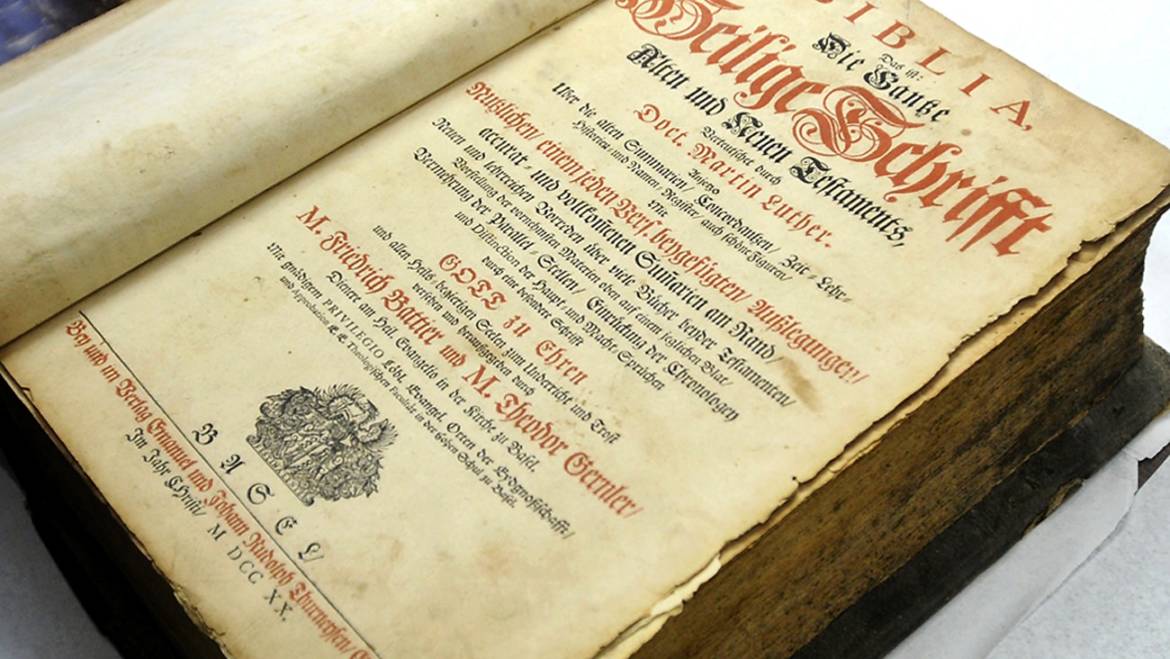What version of the Bible do you hear and read? Just in English, we have many to choose from. They range from translations that aim to be as accurate as possible (such as the New Revised Standard Version) to others whose main objective is to be easy to understand, even if certain details get lost.
Imagine, though, if there were no Bible available in English—if such a thing didn’t exist. What if the only Bible was in a language most didn’t know and we had to rely on priests and scholars to tell us what was in the Bible? That was the situation in the Germany of Martin Luther’s time. The Bible was most commonly found in Latin, though scholars could read it in the original languages of Hebrew and Greek. An important part of Luther’s reforms was recognizing that a German Bible was needed—and then actually creating it!
Sometimes things happen because it’s the right time, and that seems to be the case with Luther’s Bible. Johannes Gutenberg’s invention of printing with movable type had come along a few decades earlier and was coming into widespread use. Luther recognized the need to provide a Bible that ordinary, literate people could read. The many dialects of the German people were beginning to coalesce into a form that was widely understandable. Luther even had an artist friend, Lucas Cranach, who could provide illustrations for the Bible, aiding people’s understanding. And finally, Luther had the time to devote to the project.
The dispute with the Roman Catholic hierarchy that had begun with indulgences and Luther’s Ninety-Five Theses had expanded and now came to a head with the imperial council (or “diet”) held at Worms. Luther strongly defended his writings but still was condemned as an outlaw (in addition to already being named a heretic). He could have been arrested and executed, but his prince, Frederick the Wise, “kidnapped” him in April 1521 and hid him away in the Wartburg Castle. There the reformer had little to do, so he set out to begin his translation of the Bible.
He started with the New Testament. He had learned New Testament (koine) Greek, the original language, and so began with that, not Latin. Since the German language was still evolving, Luther would make trips into nearby towns to hear how people actually spoke. Luther returned to his home in Wittenberg in 1522, and within six months, his New Testament was published. After that he worked with other pastors and scholars to prepare the Old Testament. The complete Bible, with 117 woodcut illustrations, was first published in 1534. He revised it several times up until his death.
Luther’s work on a German Bible was a landmark achievement. It influenced others in many countries, including England, to do the same. He brought the scriptures into the language of his people, and in so doing spread the gospel.
This is one in a series of articles about Lutheranism on the 500th Anniversary of the Reformation. © 2016 Augsburg Fortress. Used by permission.


